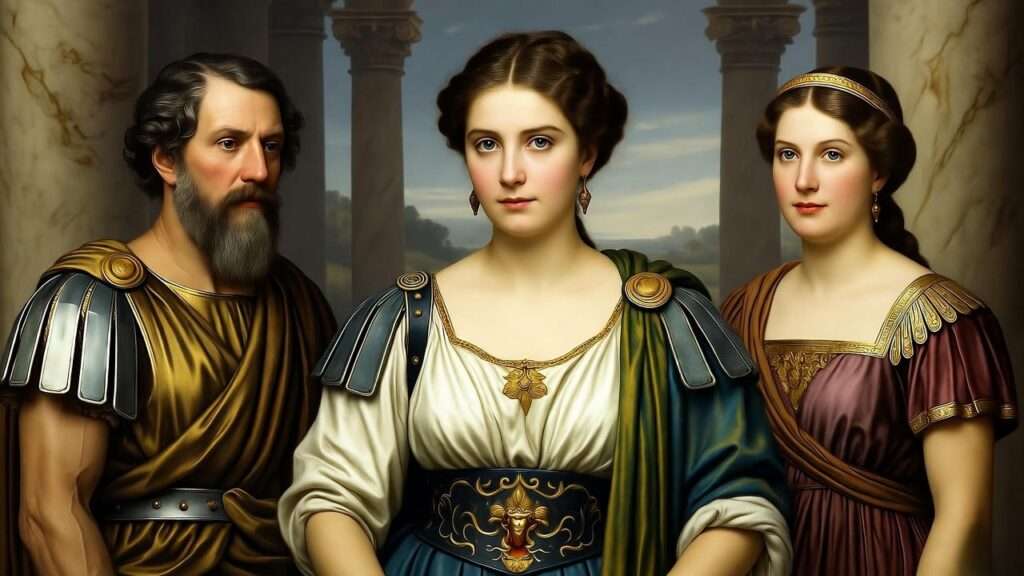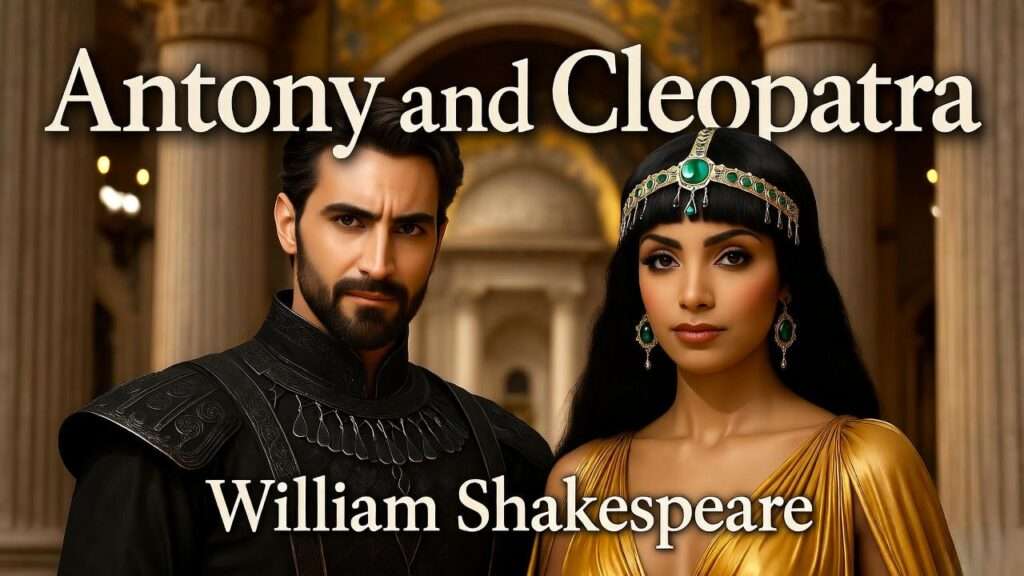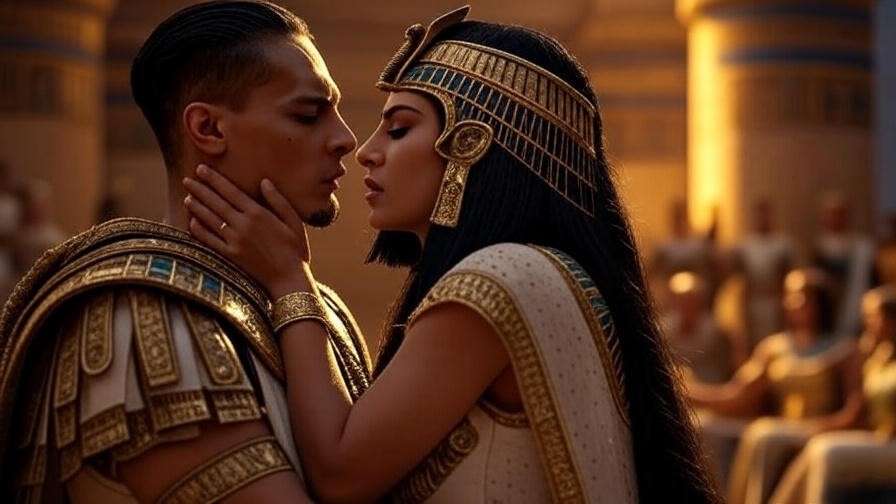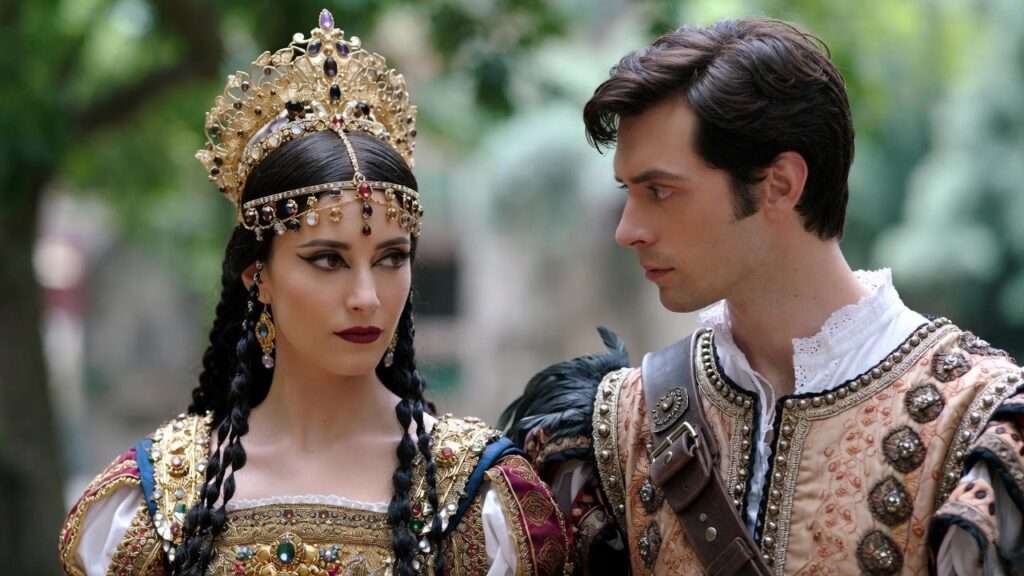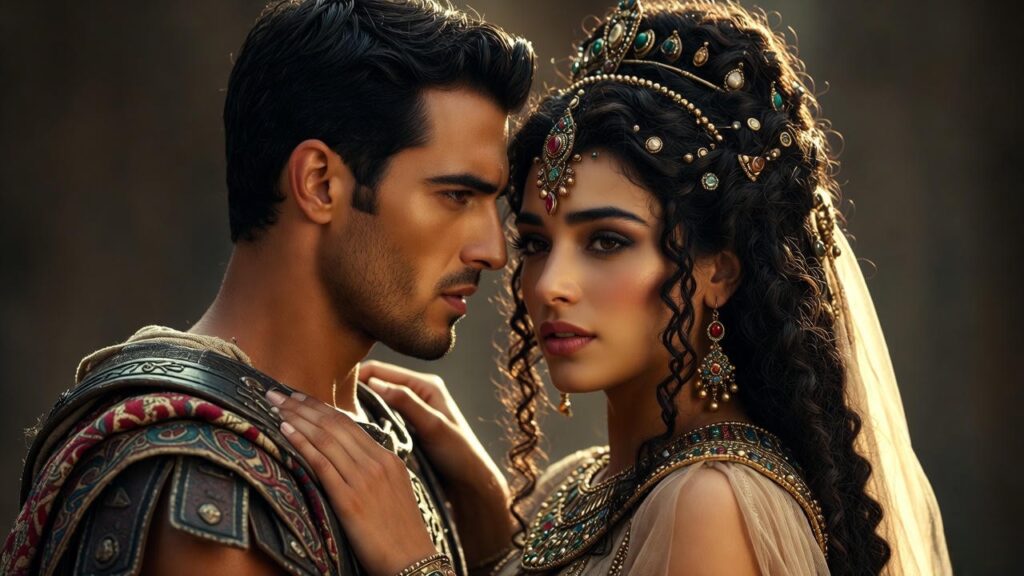Picture a queen, draped in gold, commanding the stage with a voice that weaves seduction and sovereignty into every syllable. This is Cleopatra in Shakespeare’s Antony and Cleopatra, a character who captivates as much today as she did in the Elizabethan era. As Cleopatra, she embodies power, passion, and tragedy, making her one of Shakespeare’s most complex creations. Why does her story resonate across centuries? This article dives deep into her role, exploring her historical roots, her theatrical brilliance, and her enduring relevance. Whether you’re a Shakespeare enthusiast or a curious reader, we’ll uncover what makes Cleopatra a timeless icon, blending scholarly insights with accessible analysis to illuminate her place in Antony and Cleopatra.
Our journey will decode Cleopatra’s multifaceted character—her political acumen, her passionate yet strategic love for Antony, and her unforgettable stage presence. Drawing on historical sources like Plutarch’s Lives and expert interpretations from scholars like Carol Thomas Neely and Harold Bloom, this article offers a comprehensive guide to understanding Cleopatra’s role. By examining her as a symbol of power, a lover, and a theatrical force, we aim to provide insights that enrich your appreciation of Shakespeare’s masterpiece and its relevance to modern themes of leadership and identity.
Who Was Cleopatra? Historical Context Meets Shakespearean Drama
The Historical Cleopatra: Queen of Egypt
Cleopatra VII, the last active ruler of the Ptolemaic Kingdom of Egypt, was a figure of unparalleled influence in the ancient world. Born in 69 BCE, she ascended to the throne at 18, navigating a treacherous political landscape dominated by Rome. Renowned for her intelligence, Cleopatra spoke nine languages and was a master of diplomacy, forging alliances with Julius Caesar and later Mark Antony to protect Egypt’s sovereignty. Historical accounts, particularly Plutarch’s Parallel Lives, describe her as a charismatic leader whose charm was as strategic as it was natural. However, Roman propaganda often painted her as a seductress, a narrative that shaped her image in Renaissance Europe.
This historical Cleopatra provided the foundation for Shakespeare’s portrayal. Her alliances with Rome’s most powerful men were not just personal but political, aimed at securing Egypt’s independence. Yet, her reputation as a femme fatale, crafted by Octavian’s propaganda, added layers of intrigue that Shakespeare would amplify on stage. Understanding this historical context is crucial to appreciating how Shakespeare transformed a real queen into a theatrical legend.
Shakespeare’s Cleopatra: From History to Stage
When Shakespeare wrote Antony and Cleopatra around 1606, he drew heavily on Plutarch’s Lives, translated by Thomas North in 1579. However, he didn’t merely retell history; he crafted a Cleopatra who transcended her historical counterpart. In the Renaissance, England was captivated by tales of exotic lands and powerful women, partly due to Queen Elizabeth I’s reign. Cleopatra, as a foreign queen wielding immense influence, resonated with this cultural fascination. Shakespeare’s version blends historical details with dramatic flair, presenting her as a larger-than-life figure who commands both Egypt and the audience’s imagination.
In Antony and Cleopatra, she is not just a queen but a performer, a woman who stages her power through spectacle and rhetoric. The famous barge scene (Act 2, Scene 2), where Enobarbus describes her floating down the Cydnus River, illustrates this perfectly: “The barge she sat in, like a burnished throne, / Burned on the water.” This vivid imagery, rooted in Plutarch but heightened by Shakespeare, establishes Cleopatra as a figure of mythic allure. Her role as Cleopatra in the play is thus a fusion of historical truth and theatrical invention, designed to captivate Elizabethan audiences.
Cleopatra as a Symbol of Power and Agency
Political Mastery in a Male-Dominated World
Cleopatra’s portrayal as a shrewd ruler is central to her character in Antony and Cleopatra. She navigates a world dominated by Roman patriarchs, using her intelligence and charisma to maintain Egypt’s autonomy. Unlike the stoic Roman leaders, Cleopatra’s power is theatrical—she stages grand displays to assert her authority. The barge scene, for instance, is not just a moment of seduction but a calculated political maneuver, dazzling Antony and reinforcing her status as an equal partner in their alliance.
Feminist scholars like Carol Thomas Neely argue that Cleopatra’s agency challenges traditional gender norms. She manipulates Roman perceptions of her as a seductress to her advantage, turning stereotypes into tools of power. In Act 3, Scene 7, when she insists on joining Antony in battle, her presence disrupts Roman expectations of female passivity. This blend of political acumen and performative power makes her a compelling study in leadership, relevant to modern discussions of women in power.
Gender Dynamics and Feminine Power
Cleopatra’s femininity is both her weapon and her identity. She defies the Roman ideal of masculine restraint, embracing sensuality and emotional complexity. Her witty banter with Antony in Act 1, Scene 1—“If it be love indeed, tell me how much”—showcases her ability to match and even outshine him intellectually. Yet, her power is not without conflict; the Romans, particularly Octavius, view her as a threat to their ordered world, labeling her a “whore” and “strumpet.”
This tension between femininity and power is a key theme in the play. Cleopatra’s ability to wield influence through seduction, while maintaining her regal authority, makes her a proto-feminist icon. Her final act—choosing death over submission to Octavius (Act 5, Scene 2)—is a testament to her agency. “Give me my robe, put on my crown,” she declares, staging her death as a queenly performance. This moment underscores her ability to redefine feminine power on her own terms, a topic that resonates with contemporary audiences exploring gender dynamics.
Cleopatra’s Relationship with Antony: Love or Strategy?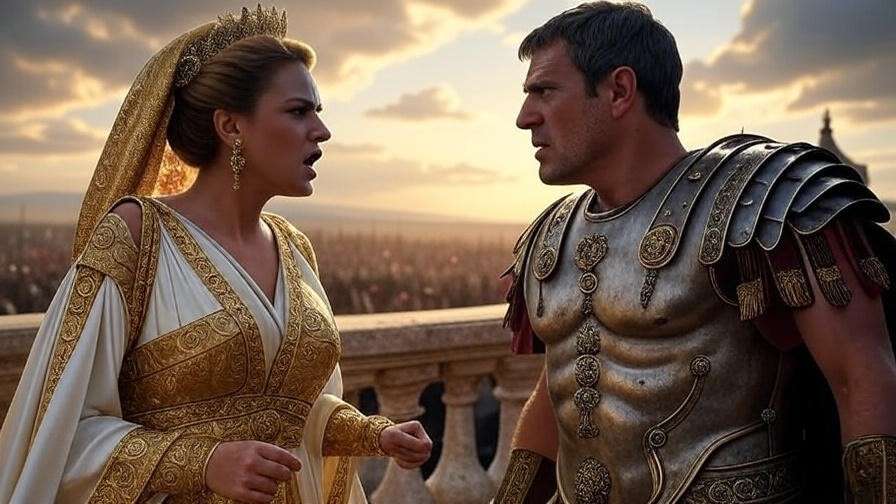
The Passionate yet Political Alliance
The relationship between Cleopatra and Antony is the heart of the play, a complex interplay of love and politics. Their alliance begins as a strategic partnership, with Cleopatra securing Antony’s military support to protect from Rome’s growing dominance. Yet, Shakespeare infuses their bond with genuine passion, creating a dynamic that oscillates between devotion and calculation. In Act 1, Scene 3, Cleopatra’s playful manipulation of Antony—“Cut my lace, Charmian, come! / But let it be”—reveals her ability to steer their relationship while maintaining an air of vulnerability. This duality captivates Antony, drawing him away from Roman duty and into her world.
Their partnership challenges Roman values, particularly the stoic discipline championed by Octavius. Antony’s decision to follow Cleopatra into the Battle of Actium (Act 3, Scene 10) is a pivotal moment, where his love for her overrides military strategy, leading to his defeat. Shakespeare uses this to highlight the tension between personal desire and public duty, a recurring theme in his tragedies. Scholars like Harold Bloom note that their relationship is both a “mutual destruction” and a “transcendent love,” elevating it beyond mere politics to a cosmic struggle.
Tragedy and Sacrifice
The tragic arc of Cleopatra and Antony’s relationship culminates in their deaths, which Shakespeare crafts as acts of defiance and love. Cleopatra’s suicide in Act 5, Scene 2, is particularly iconic. By choosing death by asp rather than being paraded as Octavius’s captive, she reclaims her narrative. “I have / Immortal longings in me,” she declares, transforming her death into a regal performance that denies Rome its victory. This moment underscores her agency, as she orchestrates her exit with the same theatricality that defined her life.
Antony’s death, too, is shaped by his devotion to Cleopatra. Misled into believing she has died (Act 4, Scene 14), he falls on his sword, unable to envision a world without her. Their mutual sacrifices highlight the depth of their bond, even as their flaws—Antony’s impulsiveness, Cleopatra’s manipulativeness—drive the tragedy. This interplay of love and loss makes their story resonate with audiences, offering insights into the costs of passion and power.
Theatrical Craft: Cleopatra’s Language and Performance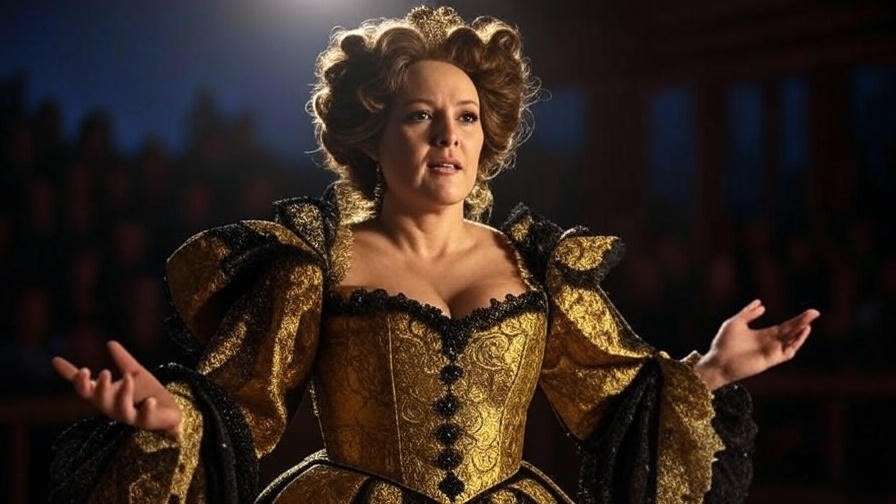
The Power of Cleopatra’s Rhetoric
Cleopatra’s language is one of Shakespeare’s finest achievements in the play. Her speeches blend poetic grandeur with emotional immediacy, making her both relatable and mythic. In Act 5, Scene 2, her vision of Antony after his death—“His legs bestrid the ocean: his rear’d arm / Crested the world”—elevates him to godlike status, revealing her capacity for love and imagination. Shakespeare’s use of iambic pentameter, rich with metaphors of nature and divinity, gives her words a hypnotic quality that commands attention.
Compared to Antony’s more straightforward rhetoric, Cleopatra’s language is fluid and multifaceted, reflecting her complex character. Her ability to shift from playful wit to profound grief—seen in her rapid mood changes in Act 1, Scene 5—mirrors the mercurial nature of Egypt itself. This linguistic dexterity, as scholar Janet Adelman notes, makes Cleopatra a “theatrical tour de force,” embodying the play’s themes of excess and transformation.
Cleopatra on Stage: Challenges and Interpretations
Portraying Cleopatra is a daunting task for any actor, given her emotional range and commanding presence. The role demands a balance of sensuality, regality, and vulnerability, often requiring performers to navigate rapid shifts in tone. Historically, the part was played by boy actors in Shakespeare’s time, adding another layer of theatricality, as their youth contrasted with Cleopatra’s mature authority. Modern productions, however, have allowed actresses to bring new depth to the role.
Notable performances, such as Judi Dench’s in the 1987 Royal Shakespeare Company production, have emphasized Cleopatra’s humanity, blending her grandeur with moments of raw emotion. Directors face the challenge of staging her spectacle—such as the barge scene—while keeping her relatable. Tip for directors: Focus on Cleopatra’s physicality and voice to convey her charisma, using minimalistic sets to let her language shine. These interpretations keep Cleopatra vibrant, inviting audiences to see her anew with each performance.
Cleopatra’s Cultural and Modern Relevance
Cleopatra in Popular Culture
Cleopatra’s image extends far beyond Shakespeare, permeating film, literature, and art. The 1963 film Cleopatra, starring Elizabeth Taylor, cemented her as a Hollywood icon of glamour and seduction, though it leaned heavily on the seductress stereotype. Modern adaptations, such as the 2017 graphic novel Cleopatra in Space or HBO’s Rome, reinterpret her for new audiences, often emphasizing her intelligence over her allure. These portrayals owe a debt to Shakespeare, whose Cleopatra set the template for her as a multifaceted figure.
However, popular culture often overshadows her political acumen, focusing on her relationships with Caesar and Antony. By revisiting Shakespeare’s text, readers can appreciate the depth he gave her, balancing romance with strategy. This cultural legacy makes Cleopatra a fascinating case study in how historical figures are reimagined across time.
Why Cleopatra Matters Today
Cleopatra’s story resonates with modern audiences for its exploration of female leadership, cultural identity, and the intersection of love and power. As a woman wielding authority in a patriarchal world, she mirrors contemporary discussions about gender and leadership. Her ability to navigate cultural differences—Egyptian versus Roman—speaks to today’s globalized societies, where cross-cultural understanding is vital. Moreover, her defiance of Roman domination parallels modern narratives of resistance and autonomy.
For readers and theatergoers, Cleopatra offers a lens to explore complex female characters who defy simple categorization. Her blend of strength and vulnerability inspires those grappling with their own identities in professional or personal spheres. Call to action: Dive into Antony and Cleopatra or attend a live performance to experience her story’s emotional and intellectual depth firsthand.
Common Questions About Cleopatra in Shakespeare’s Play
FAQs
- What inspired Shakespeare to write about Cleopatra?
Shakespeare drew primarily from Plutarch’s Parallel Lives, specifically the life of Antony, translated by Thomas North. The Renaissance fascination with classical history and exotic figures like Cleopatra, coupled with England’s own experience of a powerful queen in Elizabeth I, inspired his portrayal. - Is Cleopatra portrayed as a villain or a hero?
Shakespeare presents her as neither purely villainous nor heroic. Her manipulativeness can be seen as self-serving, yet her loyalty to Antony and defiant death elevate her to tragic heroism. Her ambiguity is part of her allure, inviting varied interpretations. - How does Cleopatra compare to other Shakespearean women?
Like Lady Macbeth, Cleopatra wields power, but her sensuality and emotional depth set her apart. Unlike the passive Desdemona, she actively shapes her fate. Her regal authority echoes Elizabeth I, making her a unique blend of Shakespeare’s female archetypes. - Why is Cleopatra’s death so iconic?
Her suicide, staged with theatrical precision, transforms a moment of defeat into one of triumph. By choosing death over subjugation, she asserts her agency, making the scene a powerful symbol of resistance and dignity.
Cleopatra in Antony and Cleopatra is more than a historical figure; she is a theatrical masterpiece, embodying power, love, and tragedy. As a queen, she navigates a male-dominated world with unmatched cunning; as a lover, she captivates Antony and audiences alike; as a performer, she commands the stage with poetic brilliance. Her story, rooted in Plutarch’s history but elevated by Shakespeare’s genius, continues to captivate for its exploration of timeless themes. From her political acumen to her iconic death, Cleopatra challenges us to rethink gender, power, and identity.
To deepen your understanding, explore Antony and Cleopatra through a modern performance or scholarly texts like those from the Folger Shakespeare Library. Reflect on how Cleopatra’s legacy speaks to today’s struggles for agency and recognition. Share your thoughts: How does Cleopatra’s story inspire you? Join the conversation in the comments or on social media.


